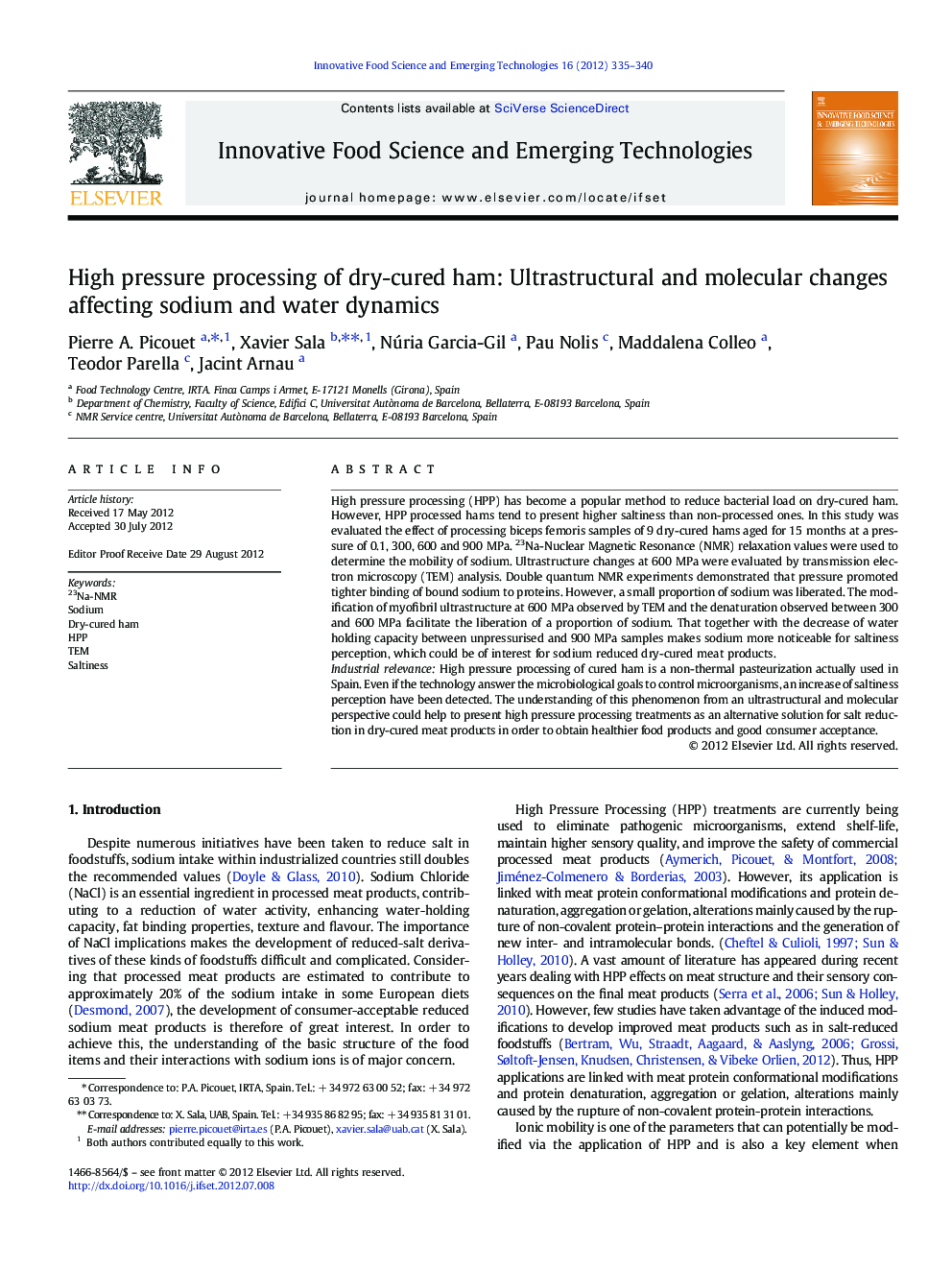| کد مقاله | کد نشریه | سال انتشار | مقاله انگلیسی | نسخه تمام متن |
|---|---|---|---|---|
| 2087175 | 1545550 | 2012 | 6 صفحه PDF | دانلود رایگان |

High pressure processing (HPP) has become a popular method to reduce bacterial load on dry-cured ham. However, HPP processed hams tend to present higher saltiness than non-processed ones. In this study was evaluated the effect of processing biceps femoris samples of 9 dry-cured hams aged for 15 months at a pressure of 0.1, 300, 600 and 900 MPa. 23Na-Nuclear Magnetic Resonance (NMR) relaxation values were used to determine the mobility of sodium. Ultrastructure changes at 600 MPa were evaluated by transmission electron microscopy (TEM) analysis. Double quantum NMR experiments demonstrated that pressure promoted tighter binding of bound sodium to proteins. However, a small proportion of sodium was liberated. The modification of myofibril ultrastructure at 600 MPa observed by TEM and the denaturation observed between 300 and 600 MPa facilitate the liberation of a proportion of sodium. That together with the decrease of water holding capacity between unpressurised and 900 MPa samples makes sodium more noticeable for saltiness perception, which could be of interest for sodium reduced dry-cured meat products.Industrial relevanceHigh pressure processing of cured ham is a non-thermal pasteurization actually used in Spain. Even if the technology answer the microbiological goals to control microorganisms, an increase of saltiness perception have been detected. The understanding of this phenomenon from an ultrastructural and molecular perspective could help to present high pressure processing treatments as an alternative solution for salt reduction in dry-cured meat products in order to obtain healthier food products and good consumer acceptance.
► HPP treatment tends to strength bounding on the majority of initially “bound” sodium ions.
► Only a minority of “bound” sodium is liberated from protein structures.
► Pressure contributes to squeeze water out of the tissue in dry-cured hams.
► Myofibrils and proteins of pressurized dry-cured ham at 600 MPa are affected by the pressure treatment.
► 23Na-NMR spectroscopy is an appropriate tool to study sodium in meat products
Journal: Innovative Food Science & Emerging Technologies - Volume 16, October 2012, Pages 335–340